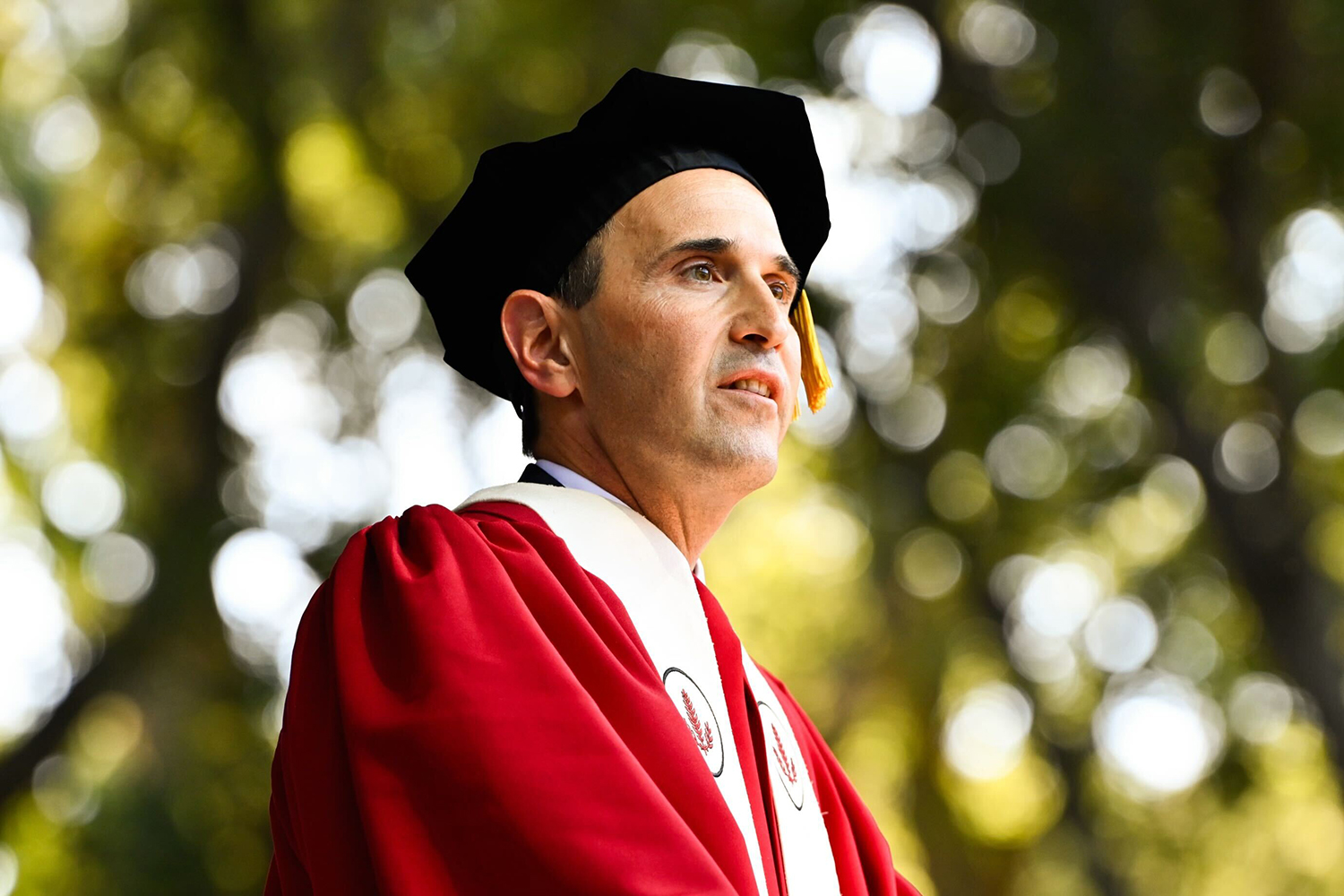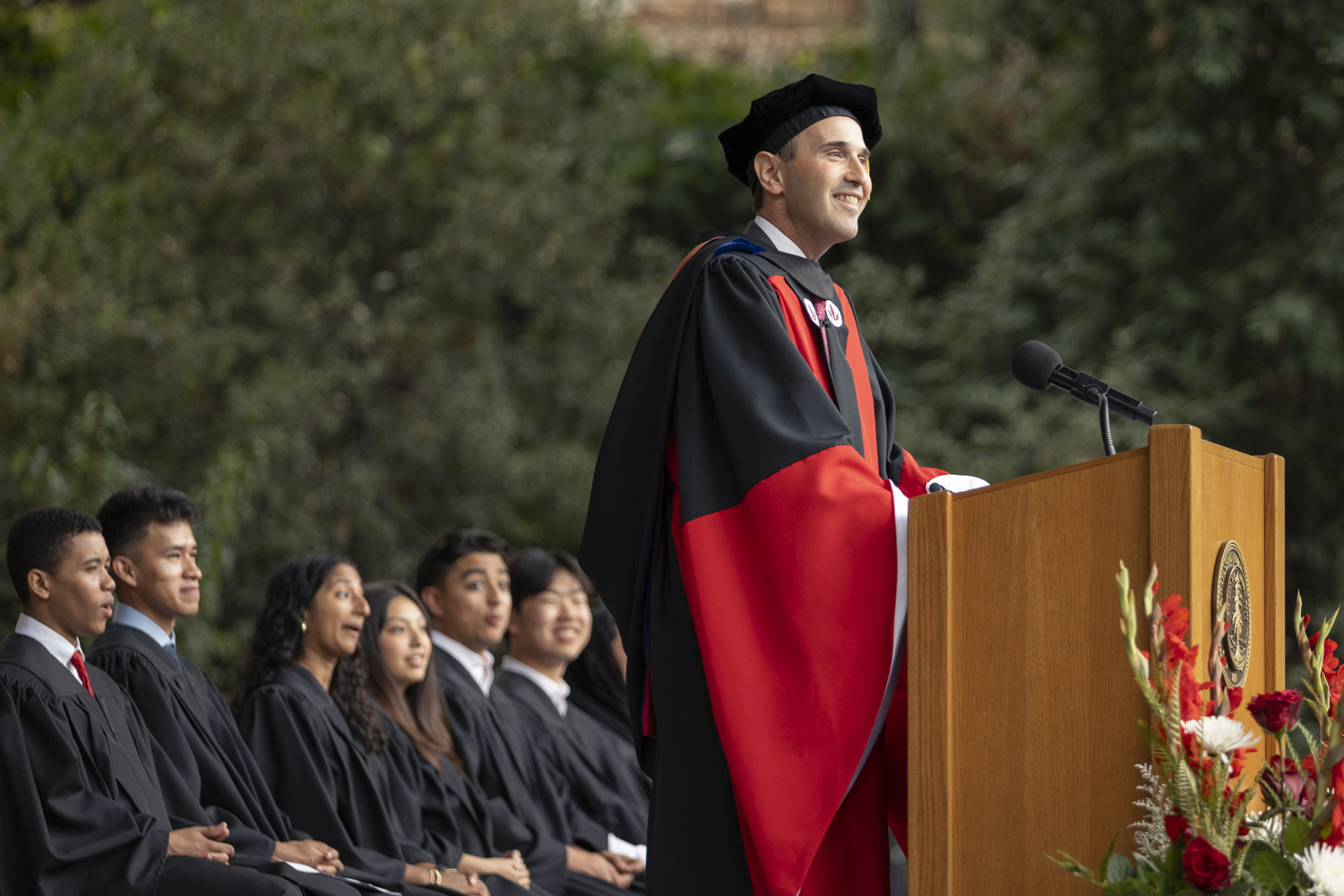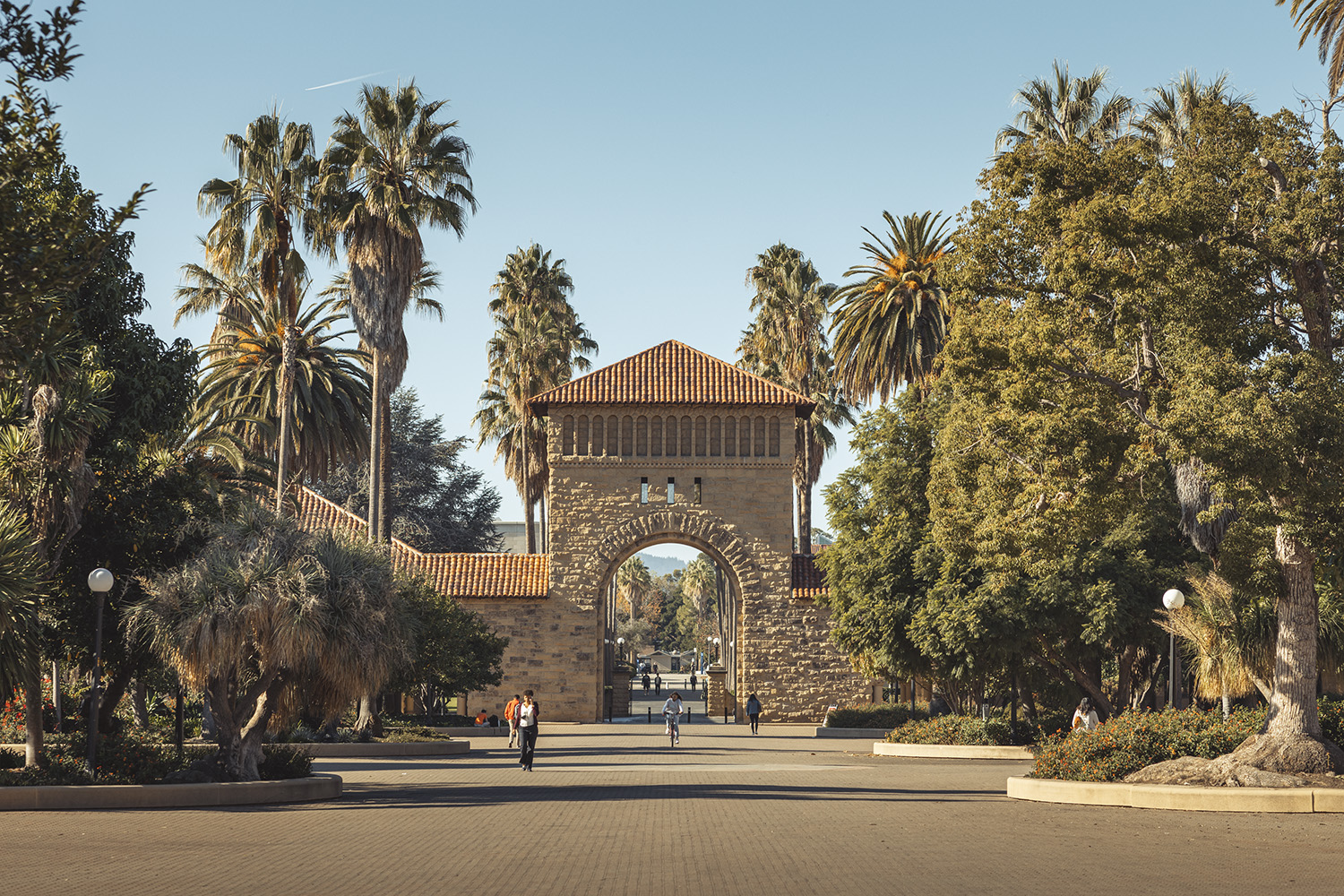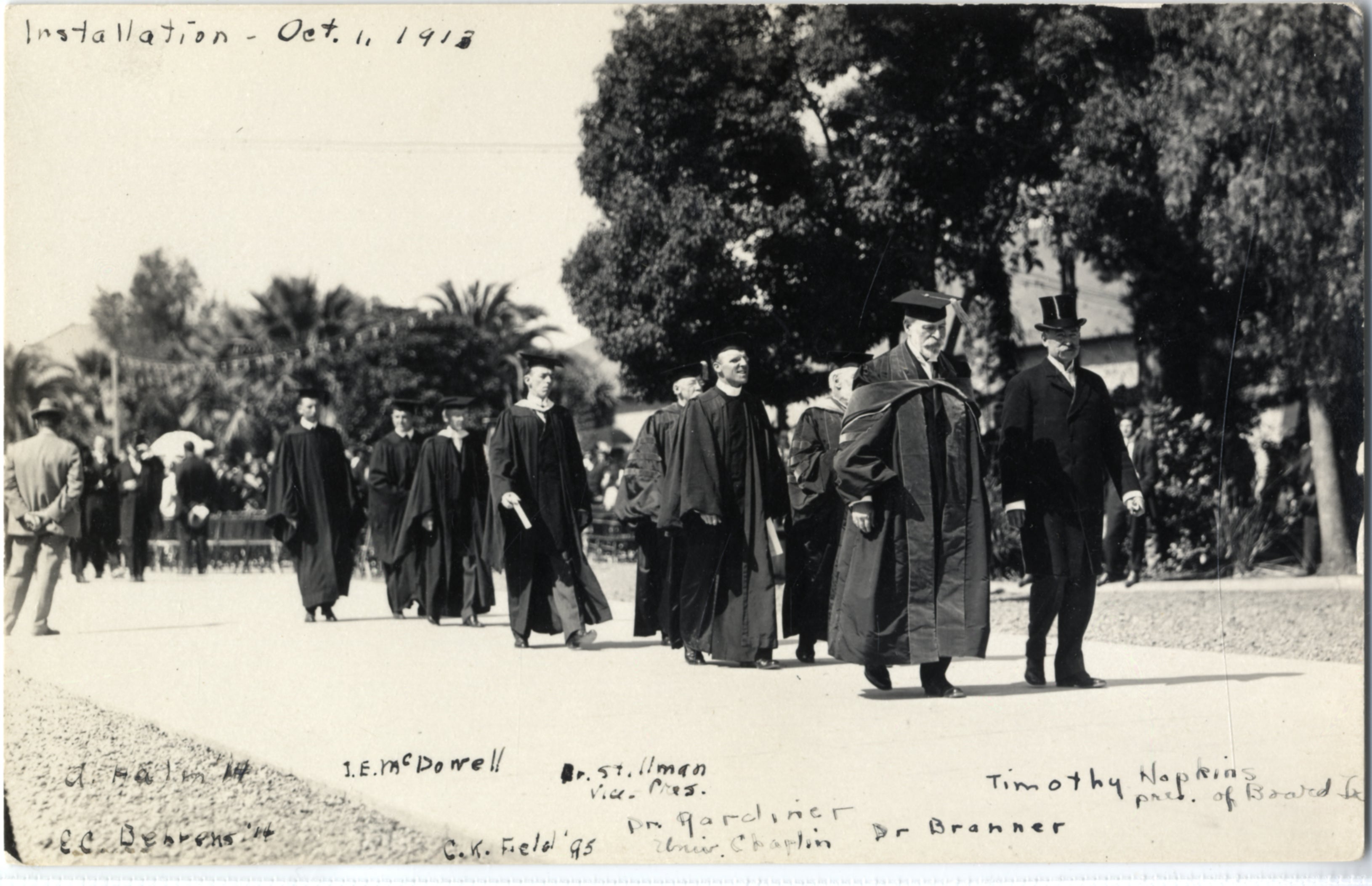Stanford is the “university of the American frontier,” infused with a sense of openness, possibility, and hope, Stanford University’s 13th President, Jonathan Levin, ’94, said in his inaugural address on Friday.
“For me, like so many others, the intellectual expansiveness of the Stanford campus has always been intertwined with the physical expansiveness of the American West,” Levin said.
Levin’s speech, delivered outdoors on a sunny California day, underscored how Stanford’s “pioneering spirit” and fundamental purpose of discovery and learning have shaped the university’s past and will guide its future. He emphasized the importance of fostering open discussion and pushing the boundaries of human knowledge as core to Stanford’s identity.
“We exist as a university to create and share knowledge, and to prepare students to be curious, to think critically, to flourish and contribute to the world,” Levin said. “This purpose, both simple and profound, gives us a distinctive role in society.”
Students, faculty, staff, alumni, and distinguished guests gathered at Frost Amphitheater for Levin’s inauguration and investiture ceremony, which began with a faculty procession following the university flag.
Levin became Stanford president on Aug. 1, after serving as dean of the Graduate School of Business for the past eight years. He succeeded Richard Saller, the Kleinheinz Family Professor in European Studies and professor of classics in the School of Humanities and Sciences, who served as interim president from September 2023.
Levin’s Stanford roots run deep: As an undergraduate, he double-majored in English and math, and he is the first Stanford graduate to become the university’s president since J. E. Wallace Sterling, PhD ’38, and the first undergraduate alumnus to do so since Donald Tresidder, Class of 1919, MD ’27.
Positive change
Reflecting on Stanford’s role in society, Levin described the university’s North Star as its dedication to discovery and learning. This commitment, he added, requires fresh ideas, open discussion, and sometimes sharp disagreement.
Levin said Stanford must be a place that fosters inquiry and curiosity – where people can ask questions, experiment with ideas, and share thoughts. “In a time of deep division, [these skills] are foundational to effect positive change in the world, which is precisely what we envision and hope for in our graduates.”
Levin reminded the audience of what an extraordinarily special place Stanford is, calling it an “engine of innovation” that has driven discovery across fields, from science and technology to medicine and the humanities. Building on this strong foundation, Stanford will make groundbreaking contributions that will reshape our understanding of the world.
“Over the next decade, I believe we will be astonished by the breakthroughs made in many fields,” Levin said. “What we do know is that if you could pick one place on earth to be during a dramatic acceleration in discovery, it would be here.”
Levin also articulated a vision for expanding Stanford’s global impact by educating more students from around the world. “I believe that in the coming years, we should find new and creative ways to open a Stanford education to more students,” Levin said. “The potential is exceptional, and it spans the world.”
Photos by Ian Bates and Don Feria
Bold and optimistic
The inauguration ceremony brought together a distinguished audience that included the Stanford Board of Trustees, emeriti trustees, members of the Faculty Senate and of the Associated Students of Stanford University, elected officials, leaders of peer universities, and friends of the university.
Several of Stanford’s previous presidents and provosts attended, including Gerhard Casper, Persis Drell, John Etchemendy, John Hennessy, Marc Tessier-Lavigne, Condoleezza Rice, and Richard Saller.
Board Chair Jerry Yang highlighted the importance of Stanford’s core attributes as guiding principles of the future. “Today, we are called to look not only outward, but across higher education and within our own communities to seek understanding and solutions,” Yang said. “As we do so, it is the qualities that define Stanford and this community – that we are bold and optimistic, scholarly and collaborative – that will help us create a brighter future. In Jonathan Levin, we have a new president who embodies these best characteristics of our university.”
Yang praised Levin as a person of integrity, authenticity, and deep thoughtfulness, adding, “He brings a fresh perspective and a clear vision that will help Stanford navigate the challenges of today and envision where we might go tomorrow.”
“This afternoon,” Yang continued, “we entrust Jon with the values of Stanford University – among them curiosity, free inquiry, openness, and academic freedom. And we entrust him with leading us to a future in which we can continue to advance the search for truth, to educate new generations of students, to pursue bold ideas, and to foster a strong community of curiosity.”
Yang carried out the investiture ceremony with Shivam Patel, MBA ’24, and presented Levin with the Stanford presidential robe, which is worn at ceremonial occasions.
Provost Jenny Martinez read an excerpt of Alfred Tennyson’s “Ulysses” during the ceremony, which also featured music by The Bay Brass and the acapella group Stanford Talisman, as well as a rendition of the Stanford Hymn reimagined and performed by alumni.
Student Senkai Hsia, ’24, MS ’25, delivered the ceremony’s closing remarks.
“In this moment for Stanford – the past recedes and a bold bright future is opening,” Hsia said. “In Jon Levin, we will be led by a president whose values of optimism and integrity and humility and openness I aspire to emulate as a Stanford graduate.”
Party on the Quad
After the ceremony, the Stanford community gathered for an inauguration celebration on the Main Quad, where crowds of students, faculty, postdocs, staff, alumni, and others enjoyed food, games, and entertainment. Performers included the Stanford Jazz Orchestra, Stanford Taiko, Mariachi Cardenal de Stanford, Stanford Ballet Folklorico, and the Leland Stanford Junior University Marching Band. President Levin made his way through the crowd, mingled, shook hands, and took photos with attendees eager to meet him, including the Stanford Tree.
Andy Yang, who works at Stanford Law School, said he was inspired by Levin’s speech and enjoyed the sense of community he brought to the after-party. “The energy is just terrific,” Yang said. “It’s a new chapter in Stanford’s storied history.”
Yujen Lin, ’27, is an undergraduate studying symbolic systems and a member of the Stanford Dollies. “It was really fun to come out and dance with the Band and celebrate Jon Levin becoming the president of Stanford,” she said. “I met him during Move-In Day, and he’s just a really awesome dude.”
Members of the Stanford faculty joined the inauguration celebration, including Michael McFaul, director of the Freeman Spogli Institute for International Studies, and the Ken Olivier and Angela Nomellini Professor in International Studies. He said he believes the “sky’s the limit” for the university under Levin’s leadership.
“He understands Stanford,” McFaul said. “I think he’s the perfect person at this moment in time for the university.”
For more information
McFaul is also a professor of political science in the School of Humanities and Sciences and a senior fellow at the Hoover Institution, at the Freeman Spogli Institute, and at the Woods Institute for the Environment.



